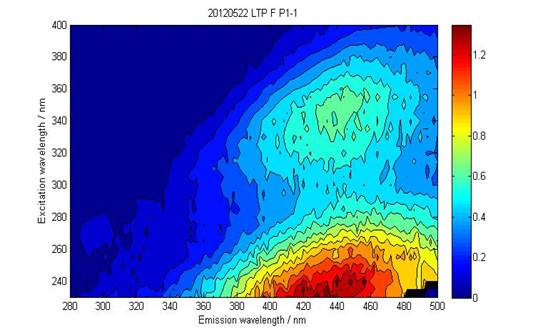Potable source water frequently has a high organic matter (OM) content originating from decaying plants, soil and peat, bacterial activity, algal blooms and upstream treated effluent discharges. It is important that OM removal at a WTP is optimised by effective process control and monitoring protocols in order to minimise taste and odour problems, disinfection by-product (DBP) formation and bacterial regrowth potential (BRP) during distribution. Consequently, a number of processes are employed to ensure good removal of OM during treatment. Currently, on-line OM monitoring comprises total organic carbon (TOC) and, less frequently, colour or UV absorbance spectroscopy [9]; however, none of these techniques give good overall OM characterisation. Consequently, a rapid, selective and sensitive monitor of OM character is required to provide more informative early warning devices, enhanced process control and improved drinking water quality monitoring. Recent studies suggest that fluorescence spectroscopy is a useful tool for determining OM character and function where it has been used for monitoring river water quality and failures in recycled water treatment and distribution systems. However, limited studies have investigated the use of fluorescence in drinking water treatment plants. This project therefore investigates the use of fluorescence spectroscopy as a tool for monitoring OM character in drinking water treatment systems to improve early warning of elevated OM events, process optimisation and control, and resultant water quality monitoring.
Monitoring organic matter in drinking water systems using fluorescence spectroscopy
Improved early warning, process optimisation and water quality
University of New South Wales - ARC LP100200259
Seqwater
HunterWater
Melbourne Water
Water Research Australia
